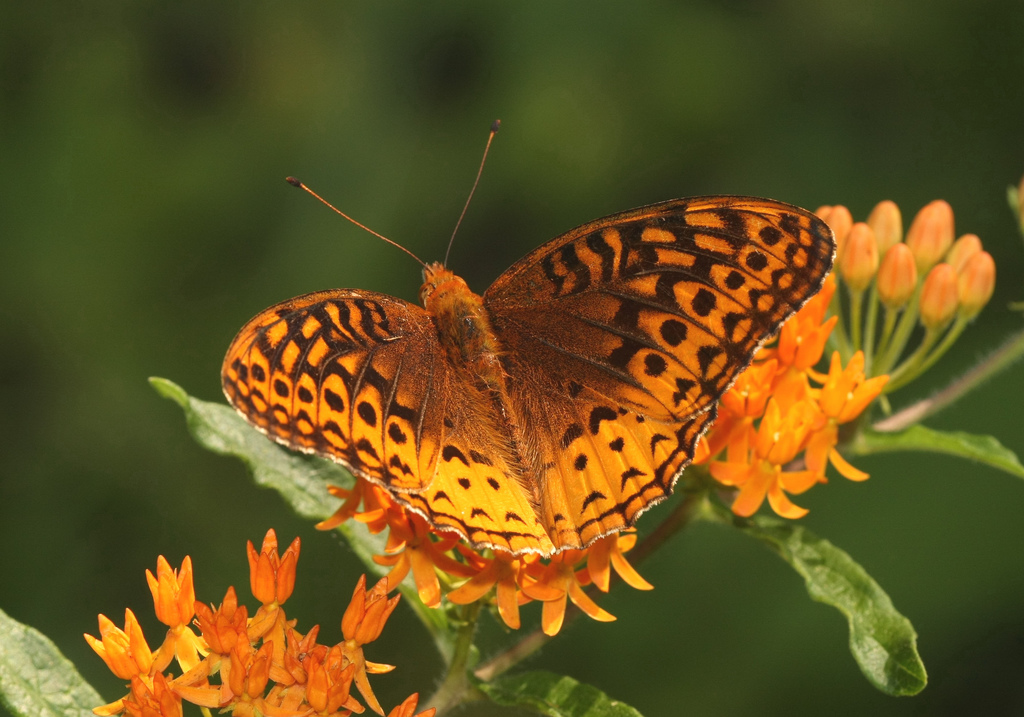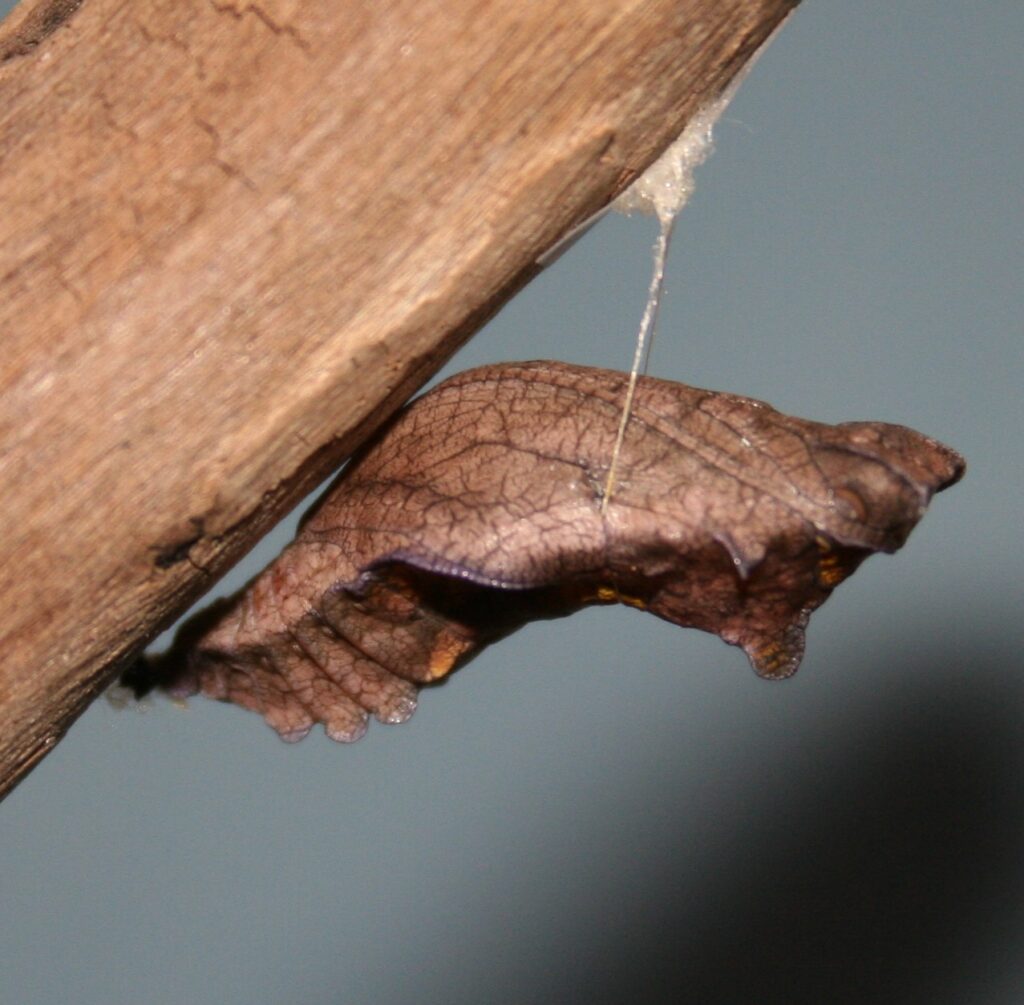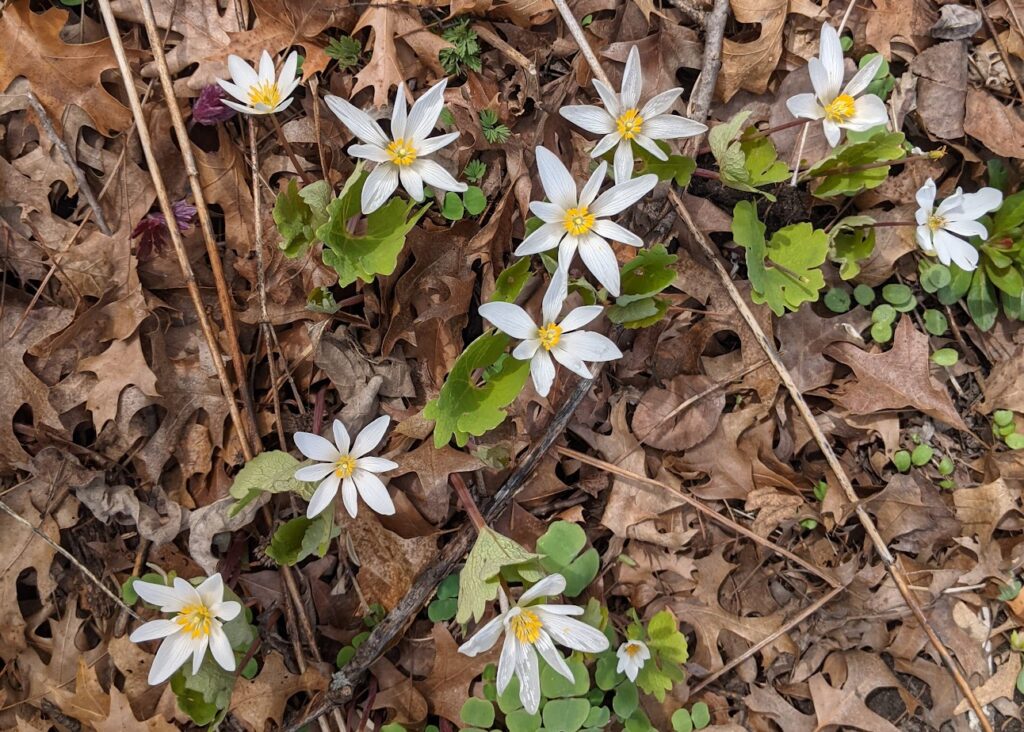Besides providing the right plants, and protecting your garden from pesticides, one of the next most valuable things you can do to support pollinators and other invertebrates is to provide them with the winter cover they need in the form of fall leaves and standing dead plant material. Frequently however, this is the hardest pill for gardeners to swallow.
This is an excerpt from the Wild Ones Journal
Current members can log in to read the latest issue or check out the Journal Archives.
It may be habitual, a matter of social conditioning, or a holdover of outdated gardening practices from yesteryear – but for whatever reason, we just can’t seem to help ourselves from wanting to tidy up the garden at the end of the season – raking, mowing, and blowing away a bit of nature that is essential to the survival of moths, butterflies, snails, spiders and dozens of arthropods.
That’s why this year – and every year – we are making the case for leaving the leaves and offering input
on what to do with them.
Must love leaves
While monarch migration is a well-known phenomenon, it’s not the norm when it comes to butterflies. In fact, the vast majority of butterflies and moths overwinter in the landscape as an egg, caterpillar, chrysalis or adult. In all but the warmest climates, these butterflies use leaflitter for winter cover. Great spangled fritillary (Speyeria cybele) and woolly bear (Pyrrharctia isabella) caterpillars tuck themselves into a pile of leaves for protection from cold weather and predators. Red-banded hairstreaks lay their eggs on fallen oak leaves, which become the first food of the caterpillars when they emerge. Luna moths (Actias luna) and swallowtail butterflies disguise their cocoons and chrysalis as dried leaves, blending in with the “real” leaves. There are many such examples.

Beyond butterflies, bumble bees also rely on leaf litter for protection. At the end of summer, mated queen bumble bees burrow only an inch or two into the earth to hibernate for winter. An extra thick layer of leaves is welcome protection from the elements. There are so many animals that live in leaves: spiders, snails, worms, beetles, millipedes, mites and more – that support the chipmunks, turtles, birds and amphibians that rely on these insects for food.
It’s easy to see how important leaves really are to sustaining the natural web of life.
Leaves and lawn
According to a 2005 NASA estimate, there are around 40 million acres of lawn in the continental United States – making turf grass the single largest “crop” we grow. This disproportionate ratio of lawn to garden is the main reason we rake, mow and blow. To mimic the natural ecosystem an animal needs, a layer of leaves needs to be at least a couple of inches thick. While this would be too much of a good thing for turf grass to handle – research has shown that lawns actually benefit from a thin layer of leaves, and the rest can be piled up around ornamental trees, shrubs and perennials to no ill effect.
If you must keep your lawn clear of leaves – try opting for raking or using a leaf vacuum to capture whole leaves, rather than shredding them with a mower and make a leaf pile in a corner of your yard. More on
that below.
Better still would be to reduce your overall lawn footprint, replacing it instead with wildlife supporting plantings that can be future repositories for fall leaves.

To shred or not to shred
Many organic gardeners opt for shredding their fall leaves for use in compost piles. While this is certainly a more environmentally friendly practice than bagging leaves and sending them to the landfill – shredded leaves will not provide the same cover as leaving them whole, and you may be destroying eggs, caterpillars, and chrysalis along with the leaves. We suggest that leaves in garden beds and lawn edges be left whole. Where space allows, consider creating a leaf pile and allowing it to break down naturally, or add the leaves gradually to your compost pile over time. Such efforts will keep critters safe and allow you to benefit from the rich garden gift that falls from the trees above.
Free mulch!
Another reason to leave the leaves is for the many benefits they provide to your landscape. Leaves provide valuable organic matter and build up healthy soil. Fallen leaves have the same weed suppression and moisture retention properties of shredded wood mulch – and they’re free! Where mulch is desired as a decorative element, what could be more seasonally appropriate than a pile of brightly colored fall leaves?
In the past gardeners may have worried that fall leaves, matted down by snow or rain, would have a negative impact on their perennials. In reality, a thick layer of leaves provides additional insulation against bitter cold weather, and can protect newly planted perennials when frost-heave may expose tender roots. Anyone who has spotted fragile spring ephemerals popping up in the woods knows that all but the frailest of plants will burst through the leaf litter in spring without trouble.
The bottom line
You gave them flowers and a place to nest. You tended your garden and avoided pesticides. Don’t carry all of that hard work out to the curb. Simply put, when we treat leaves like trash – we’re tossing out the beautiful moths and butterflies that we’ll surely miss and work so very hard to attract.
While the idea is to “leave the leaves” permanently – for all of the benefits mentioned above – if you do decide you need to clean up the garden and remove the leaves in spring, make sure you wait until late in the season so as not to destroy all the life you’ve worked to protect.

Wheeler, J. (Fall 2023). Leave the leaves! Wild Ones Journal, 35(3)p. 26-27.
Justin Wheeler, formerly the Xerces Society’s web and communications coordinator, is now a Penn State Extension master gardener, providing education and outreach to his community on a range of gardening-related subjects such as sustainable and pollinator-friendly gardening practices.
Cover photo and article by Justin Wheeler, Published in Wild Ones Fall 2022 Journal, Updated October 2023 by Wild Ones Staff

